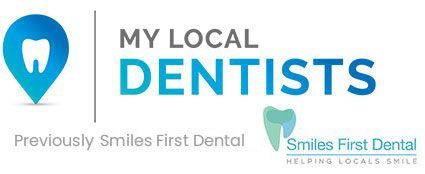
Dental emergencies don’t usually include a chipped tooth—especially if it isn’t causing you severe pain or discomfort. But, if you want to know what to do with a chipped tooth, you should arrange a routine dental appointment rather than see an emergency dentist. They can examine you to check on the damage. They will also recommend appropriate treatments to prevent it from causing problems in the future and restore your tooth’s cosmetic appearance.
What to do with a chipped tooth, and when is it a dental emergency?
A chipped tooth is a dental emergency if you are experiencing severe pain, the injury has caused a deep crack, or a significant portion of your tooth has broken off. Get in touch with an emergency dentist for further advice.
Treatments for a chipped tooth
Unless the chip is minor and you can live with it, there isn’t a way of fixing it without going to the dentist. Many treatments are standard procedures that only require a single dental appointment. But, more extensive treatments may require two visits.
Dental Filling
Dental fillings fix various dental conditions, including cavities, tooth decay, and chipped or broken teeth. There are several types of fillings, including gold, amalgam, composite resin, and porcelain. The material your dentist suggests will depend on the location and severity of the dental damage and your personal preference. Temporary fillings can be used in a dental emergency to repair a broken or chipped tooth until further treatment can be arranged.
Dental Bonding
What to do with a chipped tooth if it is too big for a filling? Dental bonding is a popular cosmetic dentistry procedure that can fix several dental problems, including a chipped tooth. Bonding can repair damage to the tooth enamel and change the shape or colour of the tooth. It is a relatively simple and quick procedure, typically completed in a single office visit.
- Inlays – A chipped tooth can be a cosmetic concern for many people. Inlays are one option a dentist can choose to repair it. An inlay is a custom-made filling matched to your natural tooth colour, so it blends in seamlessly. Inlays are made from various materials, including composite resin, gold, or porcelain, and bonded to the tooth with dental adhesive. They may be used in a cosmetic dental emergency—for example, to repair a badly chipped tooth if a patient has a special occasion to attend
- Onlays – A dentist may recommend an onlay when the cusps (the pointed surfaces on the back teeth) are damaged. Depending on the severity of the damage, you may require more extensive treatment than a filling. Damaged cusps should be treated as soon as possible since the tooth can quickly become susceptible to an abscess or pulpitis. Onlays provide a middle ground between a filling and a dental crown. An onlay is custom-made and bonded to the tooth, so you may have a temporary filling applied while waiting for the onlay.
 Dental Crowns
Dental Crowns
A dental crown may be required if your tooth has extensive damage or is broken. Dental crowns are one of the most commonly used treatments in restorative dentistry. They are used to cap a weakened tooth to protect it from further damage, strengthen its structure and restore its function.
A temporary crown may be placed in dental emergencies, while a tailor-made crown is fabricated in a dental lab.
Dental Veneers
Dental veneers are a purely cosmetic treatment affixed to the front of the teeth, disguising any imperfections. The treatment is not used for dental emergencies and typically requires at least two visits to the dentist.
The Takeaway
So, now you know what to do with a chipped tooth. Unless it’s a dental emergency, schedule a routine appointment with us or call on (02) 9630 9996 to find out what we can do for you.
Note: Any surgical or invasive procedure carries risks. Before proceeding, you should seek a second opinion from an appropriately qualified health practitioner.
References
Colgate: Only preparation and expectations
https://www.colgate.com/en-us/oral-health/fillings/onlay-preparation-and-expectations
WebMD: Dental crowns
https://www.webmd.com/oral-health/guide/dental-crowns
